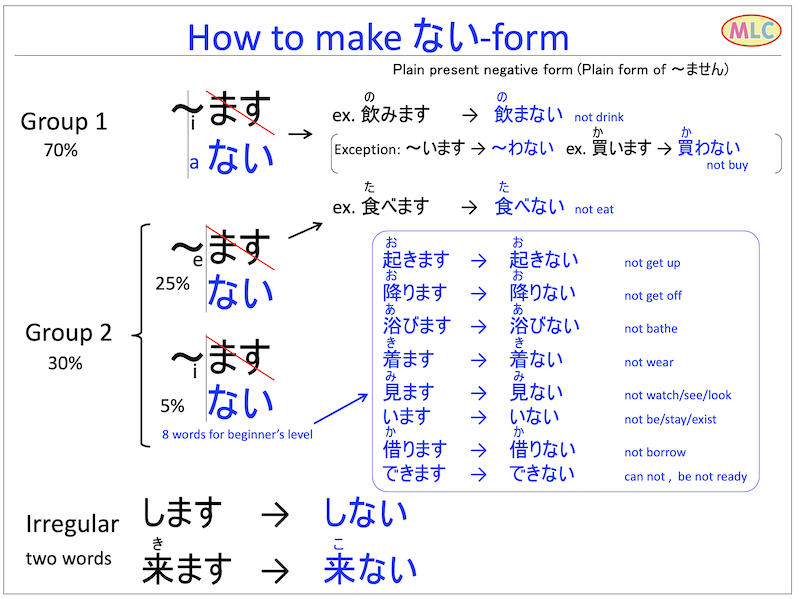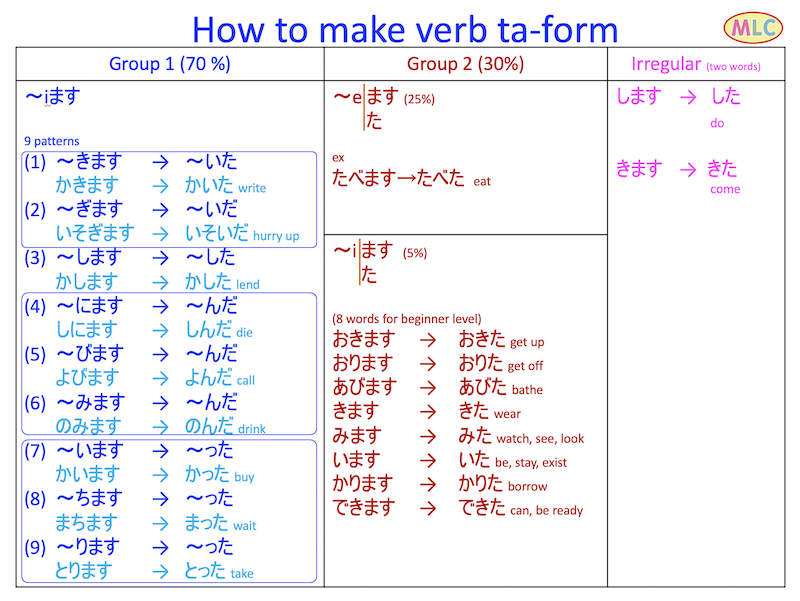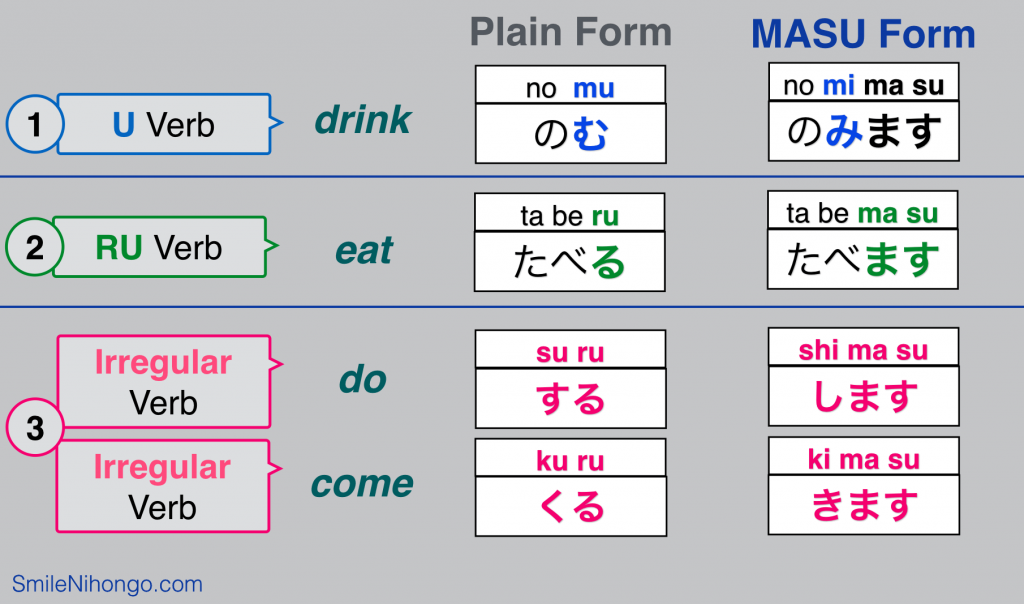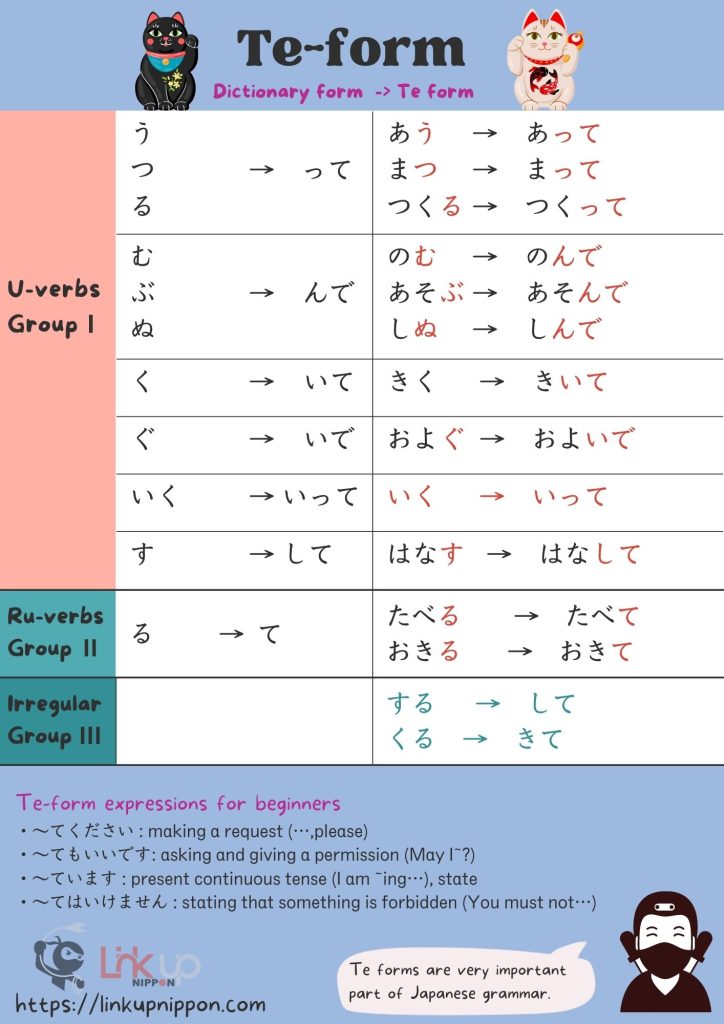
Kanji Dictionary 2500 OMG Japan
The plain present is the basic form of Japanese verbs usually listed in the dictionary (Hence, it's also known as "the dictionary form"). Verbs in this form end with the "u" sound as in or nomu, tukau, or suru, though they are classified in three different conjugation groups. Despite its being frequently referred to as the "present form," it.

Dictionary form Base of Japanese verbs you need to know
行く・来る. 行く and 来る are Japanese words for "to go" and "to come." 行く indicates that the speaker's on the departure side of the movement, while 来る…. Deep-dive, detailed Japanese grammar lessons that are easy to understand. Level-up your Japanese ability faster.

Kanji Dictionary 2500 OMG Japan
The form "ます masu" is the formal way of saying a verb. Taking a verb from the dictionary form and changing it to the ます form varies according to its ending, verbs are divided into groups. (We will see more about this division of groups in another article). To facilitate this division and transformation we must divide the verbs.

The Best Japanese Dictionaries A Guide by Kim Ahlstrom
This form is the most basic form of verb and Japanese dictionaries use this form. When you search for ikimasu in a dictionary, you need to look up not ikimasu, but iku. So, this form is also called the dictionary form. This form is used as the non-past affirmative instead of -masu in casual speech, and is used with various functional patterns.

verb plain forms (dictionary form, naiform, taform, nakattaform) MLC Japanese Language
In Japanese script verbs in the dictionary form always end in a hiragana character that makes a "u" sound: る, く, う, ぐ, ぬ, む, す and つ. How does the conjugator work? Romaji: The conjugator will conjugate any Romaji text that looks like a Japanese verb - ends in "u" basically. Kanji/Hiragana: The conjugator.

The dictionary form of verbs of the first group in Japanese, and informal language YouTube
The Plain Present or Dictionary Form. The Plain Past. The Plain Negative. The Plain Past Negative. The Potential Form: I can do. The Volitional Form. Transitive and Intransitive Verbs. The ず Form. Honorifics: How to be polite in Japanese.

Learn Japanese with the help of Dictionary form of japanese verb The help
Plain Form. The plain form is called dictionary form in Japanese (辞書 じしょ 形 けい) because it is the form you find in dictionaries when you look up a verb. This form helps you find a verb's group and stem. All Japanese verbs in plain form end with a hiragana from the /u/ row of the hiragana table. Japanese Verb Conjugation Chart.

33 Learn Japanese "Dictionary Form" + koto ga dekimasu 辞書形+ことができます YouTube
Negative form. In Japanese instead of using the word not, verbs have a negative conjugation that is made with the endings -nai or -masen. O -nai is used for verbs in dictionary form while -masen is used for polite verbs or in the masu form. 私は日本語を話せない (Watashi wa nihongo o hanasenai) I don't speak Japanese.

Dictionary form (Plain present positive) MLC Japanese Language School in Tokyo 日本語の文法, 教科書, 教育
Verbs in the dictionary form are casual and informal, while verbs in the formal form end with ます (-masu), as do verbs in the ordinary polite form 丁寧語 (Teineigo). In addition to verb conjugation, the Japanese language (especially verbs) has three types of 敬語 ( keigo ) , or "honorific language," which affect the Japanese conjugation forms.

Japanese verb forms JLPT N5 Jisho form Japanese dictionary form + Japanese verb exercises
Dictionary form in Japanese verb conjugation is the base of Japanese verbs. Native speakers learn from this form. So when you use a Japanese dictionary, you will look it up using this form. We can divide Japanese verbs into 3 groups. If you are not yet confident in your grouping, check out this article first to see how to group them.

Japanese Verb Basics Group 1 Masu From to Dictionary Form Learn Japanese Online YouTube
miru --- mimasu (to watch) taberu --- tabemasu (to eat) Group 3. For these verbs, the stem will change. For examples: kuru --- kimasu (to come) suru --- shimasu (to do) Note that the ~ masu form minus "~ masu" is the stem of the verb. The verb stems are useful since many verb suffixes are attached to them.

verb plain forms (dictionary form, naiform, taform, nakattaform) MLC Japanese Language
JapanDict is a Japanese dictionary maintained by a group of enthusiasts in the Japanese culture and the Japanese language. After not finding any online Japanese dictionary that fulfilled our needs, we decided to start a fresh alternative to the already oversaturated offer available on the internet. We know learning any language can be a.

What Japanese Verb Forms to Use Download the Verb Conjugation Chart
The plain form of a verb, also called the dictionary form (since it is the one you will find in dictionaries) or basic form, is the informal present affirmative form of the verb. The plain form is arguably the one Japanese speakers use the most in their daily interactions, given that it is used with family and friends.

ੈv1rgin_m4ry2002ฅ(ᐤˊ꒳ฅˋᐤ♪)⋆。˚ ° Japanese grammar, Japanese language, Japanese language learning
The Japanese plain form of a verb is also known as also the dictionary form (辞書形) as you will find in dictionaries. It is the basic form and is used as the informal form of verbs. So this is the form you will use while talking with friends. Having said that, you can never use this form in formal settings. Also, there are other levels of.

Te form in Japanese verb conjugation Linkup Nippon
For example, this Japanese verb たべる (taberu) is a group 2 verb. To change to masu-form, replace る (ru) with ます (masu) and you will get たべます (tabemasu). I will use another example to show the change. This group 2 verb ねる (neru) means go to bed. Change る (ru) to ます (masu) and you will get ねます (nemasu).

The Best Japanese Dictionaries A Guide by Kim Ahlstrom
juppun gurai kakaru.(It takes about 10 minutes.) yama o noboru. (I will climb the mountain) konsaato ga hajimaru (The concert will start.) watashi wa migi ni magaru. (I will turn right) ie o deru. for a full list of Beginner Japanese verbs. Learn about Japanese verbs in the plain form or dictionary form.